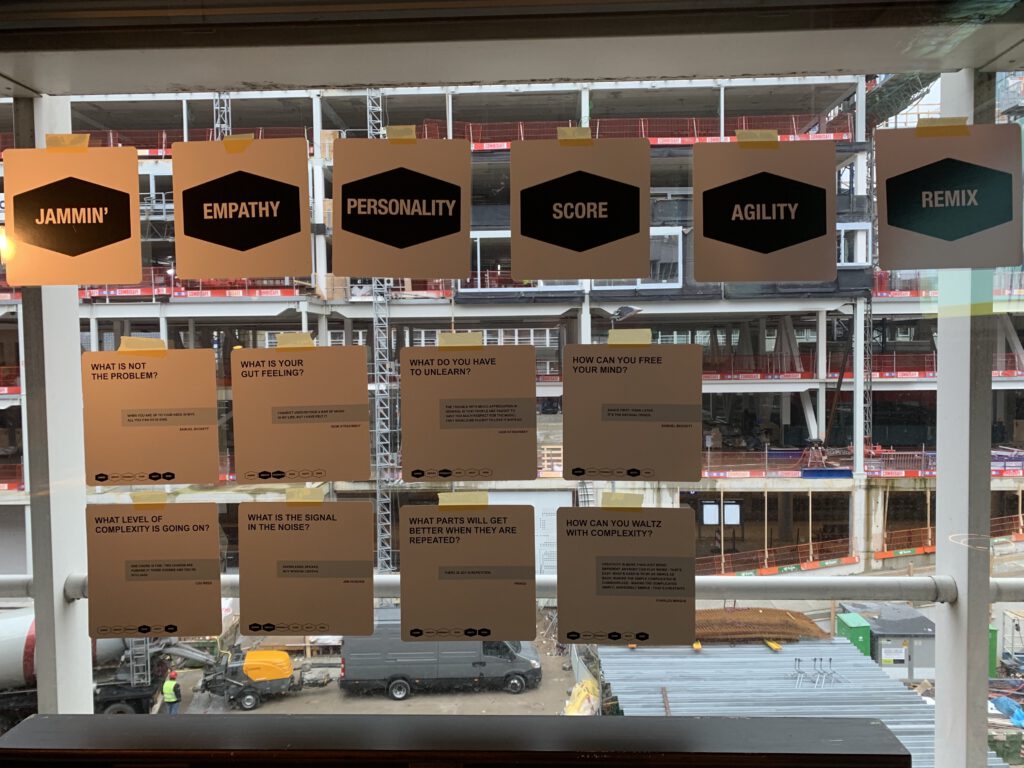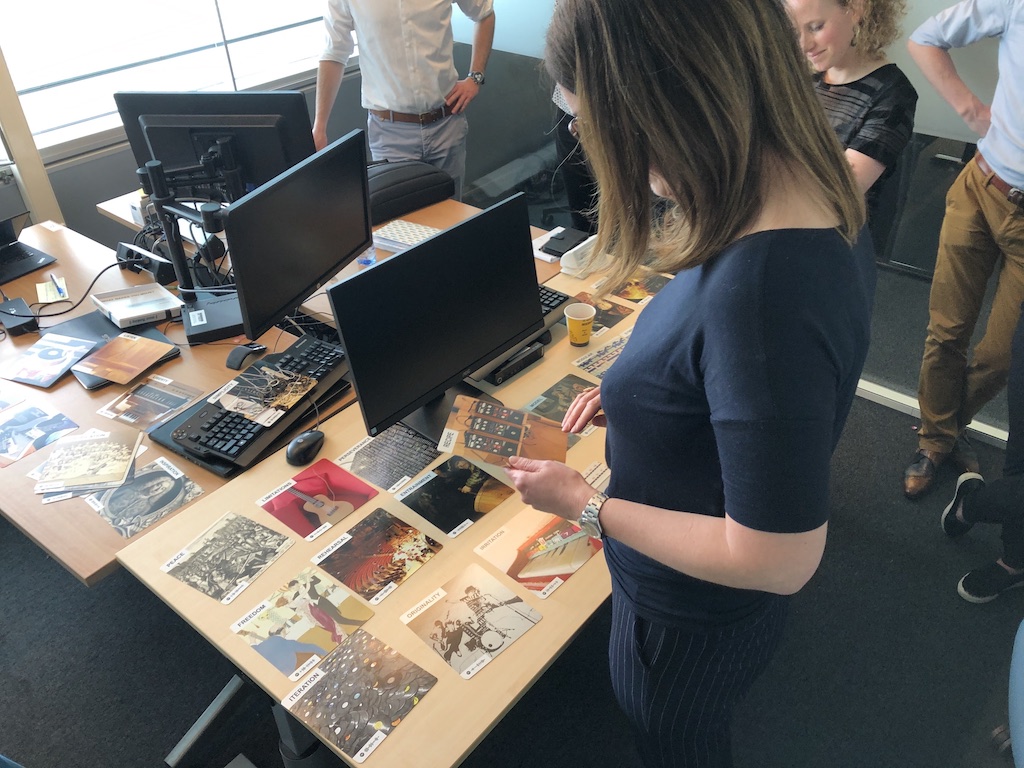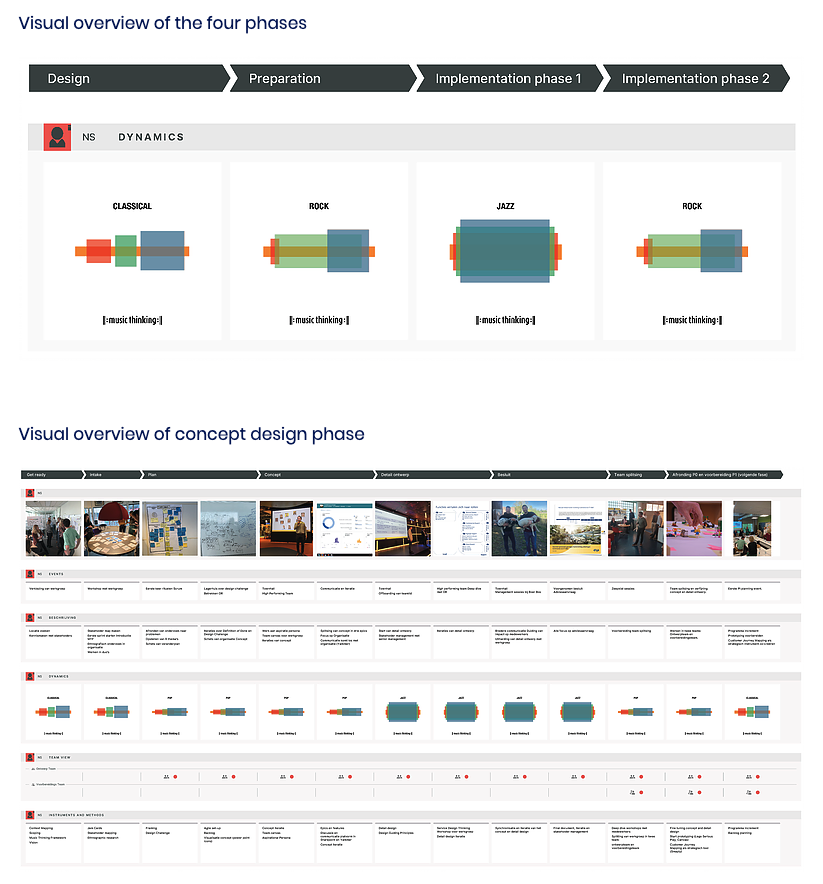The Dutch cooperative Faebric is specialised in collaborative transformation and the music thinking approach.
When the dutch railway’s asked them to design and lead the integration of the commercial organisation with the IT department they choose to do this with the music thinking approach and instruments in mind. The whole collaborative transformation incorporated 500 employees and involved e.g. the workers’ council and six collaborators from Faebric with capabilities like organisational design, leadership coaching, HR tech, service design thinking, design management, agile kanban, lego serious play, commercial and data strategy.
How to start with music thinking?
At the beginning of the project, a work team was established, and duo’s were built to establish a team feel down to the smallest entity. Half of the group members were elected by the organisation and the other half appointed by the leadership. Collaborators from outside the organisation were added along the way to scale up with additional expertise. The decision to start in duos was a crucial one and led to focus on flexibility, sharability and accountability. The group members were also encouraged to work in different constellations from duo to bigger ensembles in stand-ups, demos, and retrospectives.
How to use the Jam Cards
In one of the first meetings, the Jam Cards were used in a serendipity lab workshop to explore and ‘sense the field of change’ and to finally come to design challenges that would connect ‘the unanswered question’ of the new organisation. This was also done in the style of a design challenge.


The Jam Cards were used in many ways. For example, in onboarding and offboarding of new team members, with the question of What card summarises the experience while working on the project?

Or when the prototyping teams of new organisational entities were established every member – with the use of one of the jam cards – could make a wish for the new organisation.
These rituals helped to make the wishes more explicit, bring complicated things down to a single card and create a shared meaningful moment with the group.
Dynamics in the collaborative transformation
The phases of the music thinking framework are Listen, Tune, Play and Perform. There are many ways how these phases interact and overlap each other. Here the analogy of music comes into play. The different typicalities of a musical style, e.g. the classical music style with its step-by-step approach is very different from the jazz style where all phases overlap. Or in the Rock genre, the PLAY phase (in green) represents among other things the prototyping activities.

From a management consulting perspective, the dynamics of the music thinking framework show the visualisation of the two weekly organisation sprints. They reveal the different dynamics of the design phase.
This helped to establish that not every sprint is equal, that every two-week-sprint can have a particular dynamic and that the dynamic of its own is whether good or bad, but just different.
Other Music Thinking Instruments
The six cues were the starting point to connect instruments with interactions. The SCORE cue and the REMIX cue were the basis to iterate from the organisational design via prototyping to first operation.
Deep Listening exercises in the style of Pauline Oliveros (the difference between listening and hearing) were part of the first leadership sessions.
Later the four perspectives of listening by Otto Scharmer (Theory U) were trained and exercised with an online self-assessment tool, to keep track of the changes in the listening style.
Every leadership session started with – then in corona time and everybody locked at home – a meditation ritual, e.g. a sonic meditation including singing bowl sounds.
In addition to the mentioned instruments above the music thinking framework poster was always at hand to explain the connections and get inspiration from different tools.
A variety of playlists complemented the music thinking approach. They were used as a discussion starter and to capture the collective knowledge of how the team is listening.
Podcast Episode
Listen to the podcast with Roy Scheerder from faebric about blockchain and collaborative transformation
